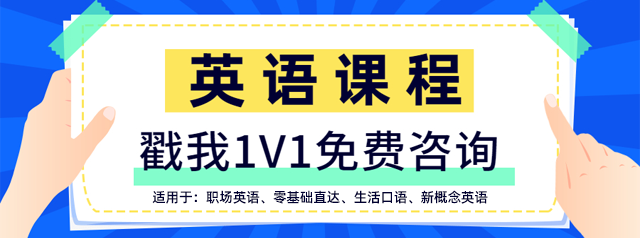资讯中心 > 英语
关注公众号

关注新东方新概念课堂,
免费获取资料包

- 长按二维码【保存图片】或【截图】保存
-
打开微信,点击右上角【+】选择【扫一扫】
安卓手机点击右上角【…】选择【从相机选取二维码】
苹果手机点击右上角【相册】 - 识别成功后,点击【关注公众号】免费领取资料等福利
英语口语查看更多>>
- 英语口语之美国习惯用语:to be swept off one's feet
- 英语口语之美国习惯用语:to break your neck
- 英语口语之美国习惯用语:to bug someone
- 英语口语之美国习惯用语:To be cut out for
- 英语口语之美国习惯用语:the time of one's life
双语阅读查看更多>>
BBC查看更多>>
- Keep someone on their toes 让某人保持警觉
- 四个包含单词 “grass” 的短语
- Why is it difficult to take a good photo of the Moon?
- A longer daily walk could be better for your heart than short strolls
- 如何用不同的英语单词表达 “证明一件事”
日常生活英语查看更多>>
口译查看更多>>
- 2025年CATTI初级口译英汉对照练习17
- 2025年CATTI初级口译英汉对照练习16
- 2025年CATTI初级口译英汉对照练习15
- 2025年CATTI初级口译英汉对照练习14
- 2025年CATTI初级口译英汉对照练习13



